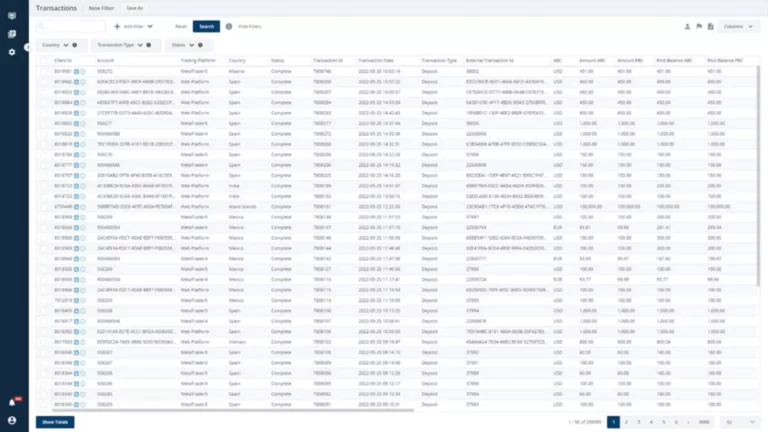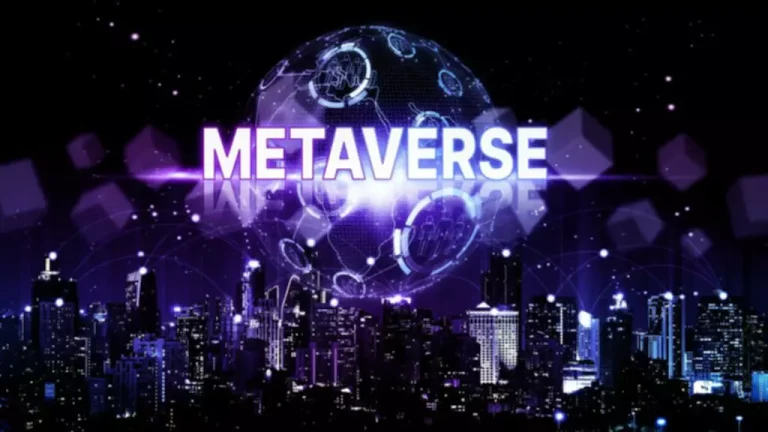Content
IoT is a strong network of interconnected computing devices and digital machines that facilitates exchange of data and information between them. Reports indicate that IoT will cause a surge in the volume of machine-to-machine transactions. The concept will allow users to make micropayments using virtual currencies when a digital device will purchase services from another machine. The widescale proliferation of 5G technology in 2022 will also promote innovation in the field. Mamoshina et al. (2018) introduce the concept of blockchain trends AI-mediated health data exchange on blockchain and explain how blockchain technology and AI can enable patients to control their own medical records. The authors also propose a personal data-driven economy in which patients have complete control over their data and manage the access privileges to protect their data privacy.
- Blockchain interoperability is the skill of different blockchain networks to seamlessly communicate, collaborate, and exchange value or data, as well as the cryptocurrencies or smart contracts linked with them.
- China will continue piloting its digital yuan in 2024, joining other countries like the United Kingdom, Bahamas, Nigeria and Sweden that have launched or discussed plans for CBDCs.
- This trend will drive the need for upskilling and training programs to develop a skilled workforce capable of leveraging blockchain technology effectively.
- The initiative, formally known as PartChain, has enabled nearly seamless transparency and impacted broader data-sharing initiatives such as the Catena-X, Automotive Network e.V.
- You can do this by exploring how to safely share data in a decentralized manner through blockchain technology, either with other companies or communities of individual users.
- In 2024, we expect significant developments in CBDC projects, with several countries piloting or launching their digital currencies.
Challenge 1 – Blockchain Safety is Still a Topic of Concern for Businesses!
All information in the blockchain can be traced along its address to recreate the entire chain. To reap the benefits of blockchain technology, hiring a trusted blockchain development company is suggested. It is possible to tackle this issue by continually updating blockchain technology and learning how it could best be used for your business or other purposes. This https://www.xcritical.com/ means that the idea of hackers creating fake transactions to steal cryptocurrency (such as Bitcoin) is still very much alive.
NFTs Focus on Real-World Utility
STOs, Security Token Offerings, are not a new phenomenon in the crypto space, but they have received a lot of attention in 2023. Regarding tokenization overall, projections indicate a surge from $2.74 billion in 2022 to $18.50 billion by 2032, marking a remarkable growth trajectory. Helping countries around the world achieve their environmental, social, and governance goals is one of the blockchain adoption trends in 2024 and beyond. Basically, a stablecoin is a hybrid of crypto and fiat currencies that combines Mining pool the benefits of both digital and real assets. Just like crypto, stablecoin is easy and fast to transfer, and like traditional currencies, its price doesn’t suddenly jump or fall. While Bitcoin and Ether are definitely the most attractive and hyped cryptocurrencies, everyone is aware of their one big drawback — they’re extremely volatile.
In a competitive labor market for retail workers, sustainability programs could give employers an edge
Extending into what seems like every possible business niche, the arrival of Blockchain as a Service is only the latest chapter in the ongoing “as-a-service” revolution. As with all other service-based offerings, BaaS will enable companies and even individuals to access blockchain technology easily and will thus boost awareness of its benefits and possibilities in the business world, likely accelerating its integration. If you want to store data safely, generate income with low fees, share information securely, or make transactions regularly over the internet. Otherwise, you may need blockchain development services to help create a product that utilizes its benefits.
Private and permissioned DLT platforms enable organizations to securely interact with and exchange data, ensuring that verified, trusted third parties have only the specific levels of data access needed. Without sacrificing data integrity or privacy, organizations can share data across company and industry boundaries and enhance collaboration and trust among ecosystem partners. However, it lacked technical or process standards and, without interoperability, enterprises could not interact across multiple platforms. Early use cases were constrained to the simple transfer of value from one party to another. Users couldn’t create conditional transactions or contingencies that would allow parties to agree on terms. Blockchain and other distributed ledger technologies are changing the nature of doing business and helping companies reimagine how they manage tangible and digital assets.
By using blockchain technology to verify claims, insurance companies would have a far better idea of whether or not their clients are telling the truth about what actually happened during an accident. This would reduce fraud cases and speed up the claims process, as customers wouldn’t have to submit as much personal information to receive their payouts. Well, as mentioned before, it removes the need for third-party intermediaries to process transactions or offer services.
This article also delivers important implications to different stakeholders, including business managers, AI and blockchain developers, information technology (IT) vendors, and future scholars. AI and blockchain developers also stand to gain acute insights on how integrating these two technologies creates business synergy. Therefore, AI and blockchain developers can collaborate to develop automated and decentralized business applications that offer better governance, higher performance, and greater security of user confidentiality and privacy (Siala & Wang, 2022). IT vendors will also be able to better identify the market for AI and blockchain business solutions and position the value they bring through the identified areas for AI and blockchain integration in business. In this way, this article empowers both professionals and scholars with state-of-the-art insights so that they will be aware of the opportunities for AI and blockchain integration to enhance the growth, resilience, and robustness of business practices.
Given this, it’s fair to assume the companies and DAOs behind today’s top blockchain applications will move towards increased efficiency, enhanced security, and a more publicly accessible user experience. Growing concerns about the environmental impact of Proof-of-Work (PoW) mining are pushing the industry towards more sustainable solutions. In 2024, we see more shift towards more energy-efficient consensus mechanisms, such as Proof of Stake (PoS) and Proof of Authority (PoA), which will reduce carbon emissions and promote eco-friendly blockchain solutions. To alleviate some of this burden, the US Department of Treasury’s Bureau of Fiscal Services is working to develop a blockchain solution to make the process of distributing grants and tracking the flow of money simpler. The project essentially turns grant payments into digital tokens that represent actual money. Recipients can either redeem the token with government agencies for cash or divide it up and distribute to subgrantees, who also would be able to turn their token into actual money.

Similar to launching a restaurant in downtown Manhattan, choosing the right blockchain can bring a near-instant flood of users. In what is one of the most obvious examples of a back-end, NFT marketplaces like Magic Eden are now rolling out NFT launchpad services. And while blockchain is growing incredibly fast, user numbers pale in comparison to those found on social media. While the technology is still young, it’s safe to assume that as more countries implement regulations, Tokenized Identity (and similar competing technologies) will become more prevalent inside cryptocurrency wallets. In the world of Web3, however, having such sensitive information stored in a centralized database runs contrary to the ethos of having a decentralized financial system.
Because of that, DeFi developers are working on a new, blockchain-based (and privacy-oriented) solution known as Tokenized Identity. The EU was one of the first governments to pass widespread regulations on crypto transactions. It’s no coincidence that many web3 projects fail when the price of Bitcoin crashes, causing funding to dry up.
Second, this article has identified the most influential articles in the field, thereby laying the foundation for future research to build on the seminal insights curated herein. Third, this article has unpacked the most prominent topics and themes on AI and blockchain integration for business, which enables prospective authors to gain a one-stop state-of-the-art insights of literature in the field. The amalgamation of AI and blockchain technologies has also introduced decentralized autonomous business models that brings greater flexibility, agility, and cost-effectiveness to business.

STOs represent an efficient and regulated way to invest and raise capital, and all the processes are recorded on the blockchain. Security tokens are cryptographic tokens that are backed by assets like bonds, corporate stocks, real estate, and even cars. They are subject to securities laws and regulations and are considered to be investments. The project utilizes a blockchain-secured platform to meticulously track every kilo of plastic exchanged, ensuring transparency and preventing double-counting through unique claim IDs for transactions. This system not only enhances traceability but also provides partners with custom, data-driven impact dashboards to monitor and share their environmental conservation progress.
Indeed, blockchain has opened the door of opportunities that enables the direct transference of value between its users in a secure and trusted manner. More importantly, all transactions are cryptographically signed on blockchain, wherein all mining nodes that hold a copy of the entire ledger verify every single transaction on the blockchain (Nakamoto, 2008; Zheng et al., 2017). Therefore, blockchain is cost effective and secure as it eliminates the need for a centralized authority to verify the transactions (Karafiloski & Mishev, 2017; Zhu et al., 2021).
This will eventually lead to higher satisfaction levels among the customers and improve the company’s profit. Moreover, customer satisfaction can be predicted using LSTM machine learning algorithm on a blockchain-based platform. The global blockchain technology market is expected to witness a compound annual growth rate of 87.7% from 2023 to 2030 to reach USD 1,431.54 billion by 2030. The global blockchain technology market size was estimated at USD 10.02 billion in 2022 and is expected to reach USD 17.46 billion in 2023. The healthcare segment is anticipated to grow at the highest CAGR over the forecast period.
By definition, the company buys and sells physical assets—but that doesn’t mean it can’t take advantage of emerging digital tools. It currently operates digital sales and marketing platforms, utilizes customer data analytics, and automates much of its production lines. Artists, writers, inventors, and other creators often struggle to prove ownership of and monetize intellectual property (IP) through licensing, patents, and copyrights. With blockchain and other DLT platforms, content creators can embed their IP with a smart contract that’s executed every time the IP is downloaded. The contract can trigger an automatic payment and flex based on user identity; for example, a large enterprise would pay more than an individual consumer. It’s becoming more user-friendly and accessible, thanks to intuitive interfaces and cross-chain integrations.